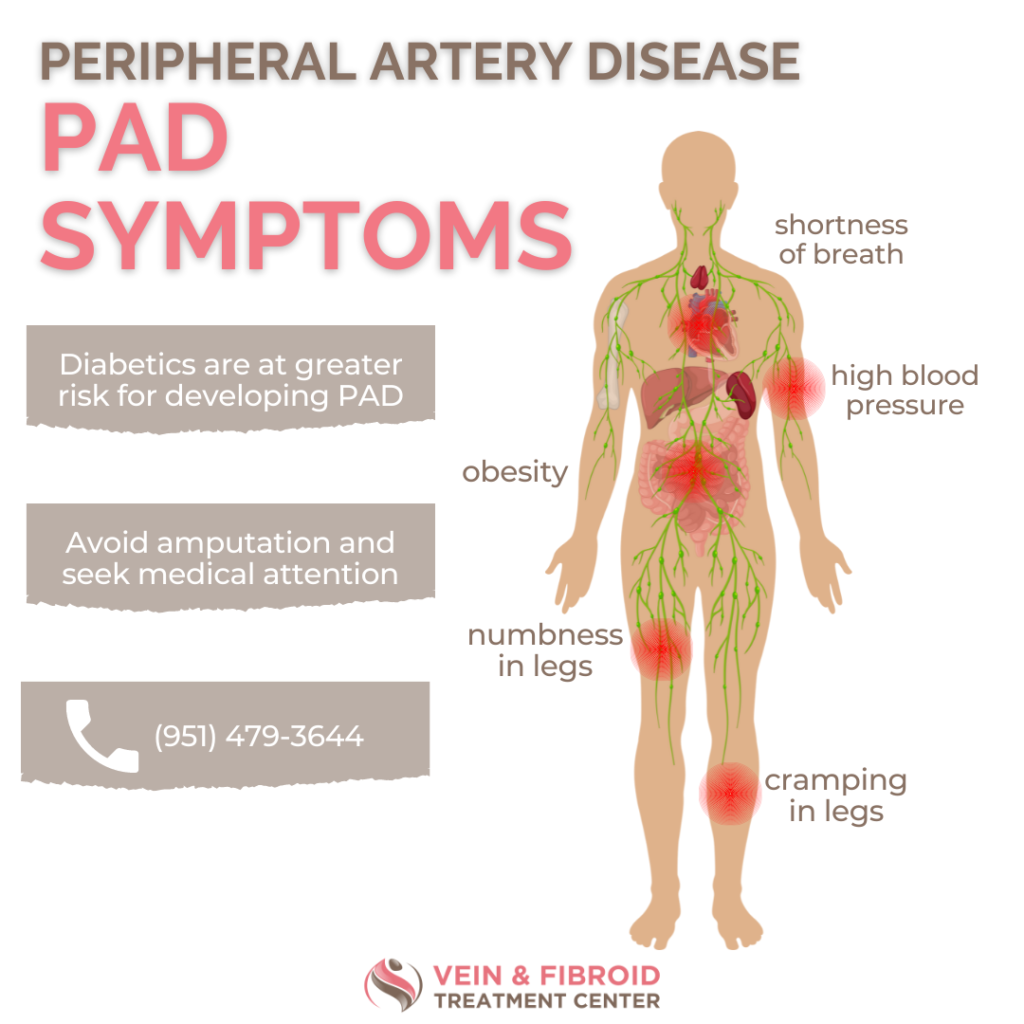If you experience what feels like muscle pain in your calves or legs, you might not immediately think it could be a sign of heart disease. Because heart disease is the leading cause of death in the United States according to the Centers for Disease Control and Prevention (CDC), it’s important to be aware not only of the classic signs of heart disease but of related conditions that can signal you’re at elevated risk for developing serious heart problems. Leg cramps can be a sign of one such condition that might easily be overlooked at first, but when caught early can be more easily treated and managed.
The Connection Between Leg Cramps and PAD
Why should pain in the calf or thigh muscles when you’re walking be something you should discuss with your doctor? It’s simple—this is the earliest and most common sign of peripheral artery disease or PAD. This common condition is caused by a buildup of fatty plaques in the arteries (also known as atherosclerosis) of your arms, legs, and feet. These plaques narrow or in some cases completely block the flow of blood, restricting the supply of oxygen to your muscles and other tissues.

How likely is it that you might be suffering from PAD? CDC data indicates that approximately 6.5 million people age 40 or older have peripheral artery disease, with the risk of developing the condition increasing after age 60. Both men and women can be affected; however, African Americans face an increased risk compared to other demographic groups. Additional risk factors include smoking, diabetes, high blood pressure, and high cholesterol.
Leg pain is a common early symptom of PAD in part because although the condition can affect any blood vessel, it tends to be more common in the legs than in the arms. When you’re active, as when you’re walking, the oxygen demands of your muscles increase. The narrowing of your arteries caused by PAD makes it impossible for your blood flow to adequately meet those oxygen needs, resulting in pain during activity that fades when you rest. This is called intermittent claudication.
Without proper medical management, PAD tends to get worse over time. As the disease progresses, patients may come to experience pain in their legs and feet even when they’re resting. That pain is worse when the legs are elevated, such as when they’re lying flat in the bed, and improves when the legs are hung over the side of the bed or when the patient sits in a chair or stands. PAD is not simply uncomfortable, though. When untreated, it can lead to ulcers—painful, slow-healing sores that can become infected, progressing to gangrene and amputation in the worst cases.
In addition to being dangerous in its own right, peripheral artery disease puts patients at higher risk of developing coronary artery disease, which shares many risk factors with PAD. Those suffering from coronary artery disease are at elevated risk for having a heart attack or stroke. Understanding the early signs of PAD can help you identify it and take steps to protect your health before you experience severe complications.
Managing PAD
While there is no cure for PAD, lifestyle changes can help slow the progression of the disease. These include quitting smoking; controlling your blood pressure, blood sugar, and cholesterol; and gentle, supervised exercise. For the best long-term prognosis, early diagnosis is the key—the sooner you know you’re affected by PAD, the sooner you can do something about it.
Dr. Saleh at the Vein & Fibroid Treatment Center can help. If you suspect you might have PAD, we’ll conduct a thorough examination using advanced diagnostic techniques to identify circulatory problems. We use that information to build an individualized treatment plan including lifestyle changes, medications, and other interventions as needed to preserve quality of life and manage your disease. If you’re already experiencing significant blockages, Dr. Saleh’s minimally invasive treatments can open constricted arteries without major surgery, restoring critical blood flow and avoiding major complications. To learn more about the signs of peripheral artery disease or to schedule an appointment with Dr. Saleh, contact us here.





